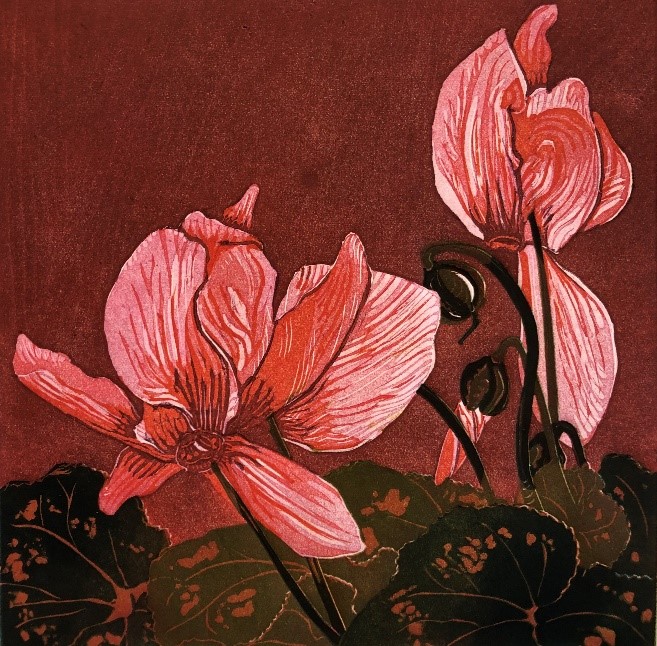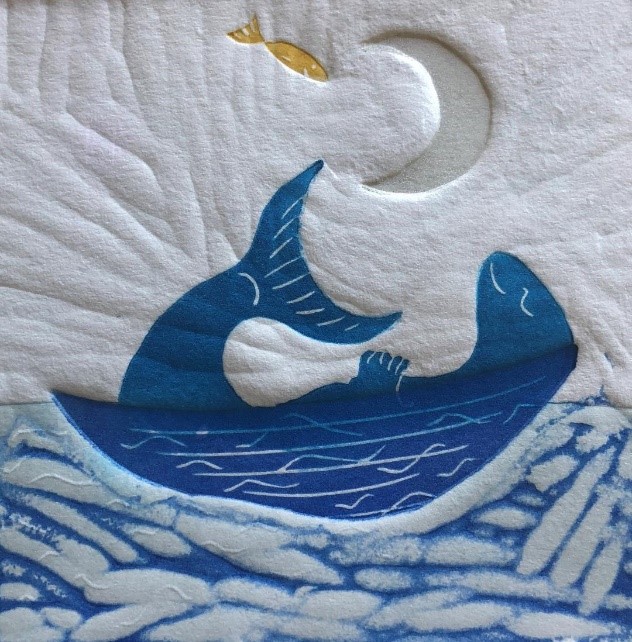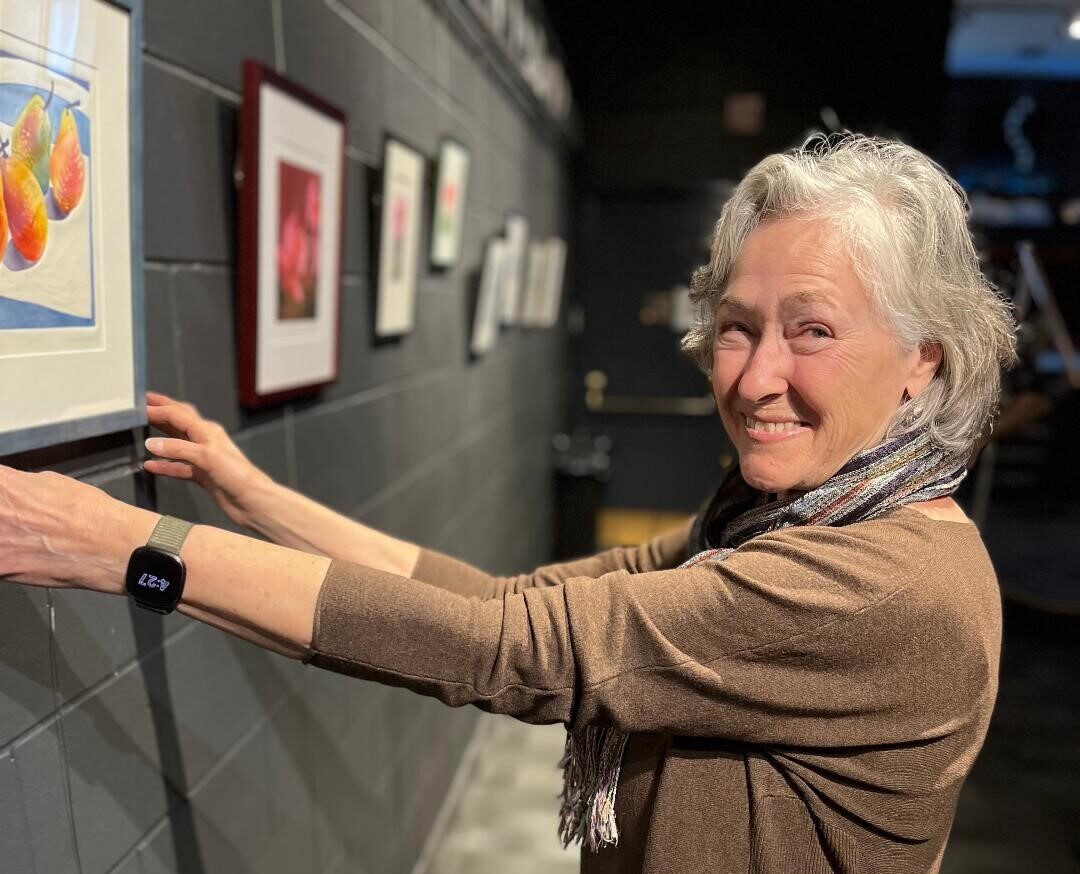
Light and Landscapes: Introducing Printmaker and Painter Diana Westwood Guy
An interview with the artist by Ricarda McFalls
In preparation for her upcoming exhibit at the Spotlight Gallery, I had the privilege of interviewing professional artist, teacher, printmaker and painter Diana Westwood Guy. A second-generation OLT patron, Diana’s experience as an artist runs deep, long and far, from her childhood in England, to high school in Ottawa, to professional studies in Banff, and England.
Visitors to the Janigan Studio will be struck by the strong emotion captured by local scenes from the Ottawa landscape, and as outlined in her history below, by the passion with which Diana was able to harness different aspects of her artistic talents throughout her career. Her linocuts stood out to me – the technique uses multiple partially inked plates over many printing cycles (as many as 30 or more), creating a ‘depth of surface’ that pulls the viewer in.
As OLT encourages aspiring, as well as accomplished, artists on their career path, I was eager to learn more about Diana’s path to her chosen profession. And along that path, what a serendipitous twist that Diana’s exhibit would feature during the production of The Shawshank Redemption – as she is surely one of the few OLT exhibitors to teach art in a maximum-security prison, among other places!
What led you to study art originally?
I have an uncle who was a professional sculptor and grandparents who wrote and illustrated books. My Dad, too, painted for relaxation, so art was embedded in our family. Although my parents did try to dissuade me from making art my full-time career, after a few years of science studies and working I found my way to studying fine arts in England, with their blessing.
How did you know that was what you wanted? Were you encouraged from an early age?
I loved to paint and draw, and I spent much of my free time doing just that. It was an activity that made me feel confident. It was encouragement from others, teachers mostly, that persuaded me to stick with it.
What brought your family to Ottawa originally?
The family immigrated to Canada from Salisbury, England, in the 60s when my father accepted a position as a Professor of Medicine at the University of Ottawa. My sister and I then attended Lisgar Collegiate where there was a superb art teacher named Miss Jelinek.
Were you able to work professionally as an artist throughout your life?
My parents were right in thinking that art was not an easy way to earn a living, so I taught art to earn my keep. I taught at various institutions, wherever I found myself in England and in Canada. The most challenging teaching experience was teaching art to O levels in a men’s maximum-security prison in England.
I have always been involved in the art world to a greater or lesser degree. My husband was a potter. For a short while I earned my living as a framer and always as a teacher in the evenings but then, suddenly, I found myself as the sole bread winner with two little children. At that point I did take on more steady, lucrative work with Canadian Heritage and Library and Archives, but I painted still and taught in the evenings.
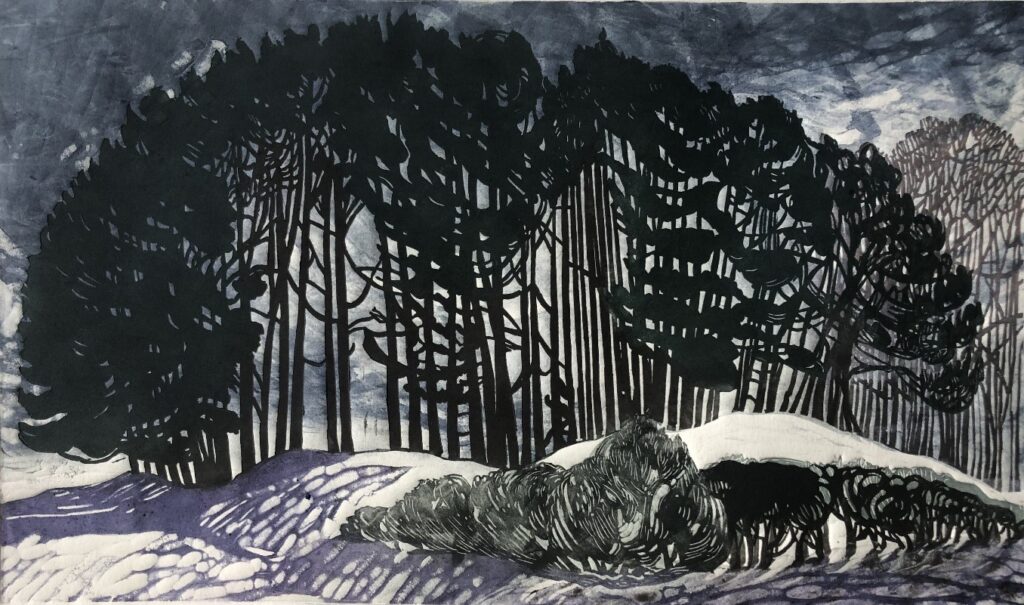
You mentioned ‘returning’ to Ottawa. Where has your life taken you and what brought you back?
I first attended the Banff School of Fine Art and then earned a certificate in fine art at the University of Ottawa under Leslie Reid and Jean-Marie Pirot. Then, convinced that I was serious about my pursuits, my parents agreed to support my return to England to study for a Fine Arts degree at the Wimbledon College of Art in London and the West Surrey College of Art. While studying in England, and later teaching there, I travelled to Europe whenever I could.
Your passion for teaching stands out! Have you worked with all ages?
I received a certificate in adult education in England and have taught various art courses at various levels in many institutions in England and Canada, ever since I started studying for my degree. I find it both very satisfying and very demanding. The only time I taught little ones was for a course that was designed for mums and their toddlers. I had huge pieces of paper hanging on the walls, ceiling to floor, so all sizes could paint on it but then there was panic when a toddler went missing. Everything stopped for a frantic search. We found him, eventually, happily tucked behind the wall hangings painting the back of the paper! Clever, but it scared the wits out of me and I decided to stick to adults.
How did you fall in love with printing?
I love drawing and it follows that I would love printmaking and the process of printing. I majored in etching at college, but at home and with children it was safer for me to work with relief printing and linoleum was the most practical material to use with non-toxic, water-soluble inks. No poisonous fumes, staining risks, clogging of the septic system or poisoning of pets and children! Now I enjoy pushing relief printing techniques to their limits. I use AKUA inks which are transparent and have similarities to watercolour. Slowly I am edging towards wood block prints to capture greater detail.
Diana, I was immediately drawn to your print entitled “Mer Bleu” — and you replied that it was likely your favourite. Can you elaborate and describe why it is for you?
I have been visiting the Mer Bleu since the 60s. It is where I go to walk and for peace. A thinking place. There is a point on one road that has not changed, where the evergreens are as black as can be, in a row, and they overhang the path in a dramatic way. A couple of winters ago I did a watercolour and a series of sketches there to use as a basis for a print. I then completed the print in the studio, very quickly before I lost the feeling. I loved the way that the white bush in the foreground came out by thinly and delicately removing strokes from the black trees beyond. The print, which is almost like a sketch in its own right, captured the feeling that I wanted. One day I will do a larger print of this same Mer Bleu spot.
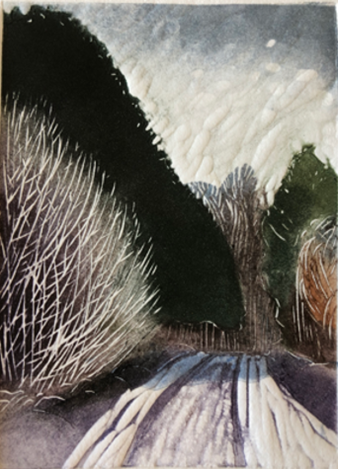
What advice do you have for aspiring artists of all genres?
You don’t follow a career in the arts to be famous or rich; you do it to say something in a very interesting way that you hope others will understand, enjoy and find enlightening. If you are able to work yourself into a position in which you can just express yourself in your chosen medium, that is quite a privilege; however, not only do you have to have something to say but you also need to know how to “say” it very, very well. There is no place for compromise. Your message changes with your life experiences, and how you express it continually improves with the life-long study of the works of brilliant artists as you struggle to understand their secrets!
A career in fine art is an isolating pursuit and it does not offer an easy way to make a living. There is, however, huge satisfaction to be found in helping others to enjoy art as you do, and that you can manage through teaching. Teaching requires that you know what you are doing so it is an activity that demands competence and maintaining a high level of production as an artist. The teaching can then be a more lucrative and steady means to earn a living while you build a reputation and a portfolio of work to exhibit.

